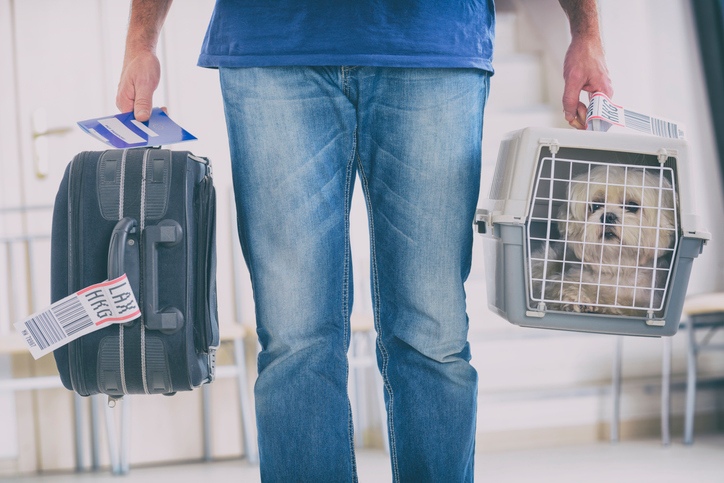Brexit Travel and Your Pet Explained

The UK has had an eventful past few years, but nothing has changed the country’s landscape like Brexit. A controversial topic for many, Brexit marked the separation of the UK from the European Union.
Now, you may be wondering – what does Brexit have to do with my dog or cat? What do they care for political decisions? While your pet may not comprehend sophisticated topics, they can be affected by them. You see, following Brexit, many rules and regulations were changed. These were regulations on things we’d previously taken for granted.
Included were changes to the regulations surrounding travel to other EU countries with your pet. If you didn’t know, the UK previously used a system known as the Pet Travel Scheme, or PETS for short. With changes to UK’s relationships with the EU, this system has slightly been changed. Read on to find out more about the PETS system, and how travel has changed with your pet due to Brexit.
What is PETS?
PETS, as mentioned earlier, stands for Pet Travel Scheme. PETS is a system that is designed to more easily allow pet owners to travel alongside their pets without the need for quarantine. And no, this quarantine isn’t related to COVID at all – the quarantine is done to prevent the potential spread of rabies, which is still a danger to many pet owners today.
The great thing about the PETS scheme is that it allows pet owners to bypass the necessary paperwork that you’d normally need to go through whenever you travel with your pet. Now, to make use of the PETS scheme, pet owners must own what’s known as a pet passport. A pet passport is a document that essentially works like a human passport and makes travel more efficient. Fun fact – the first use of a pet passport in the UK happened way back in 2002.
There’s just one small catch regarding the PETS system – it’s not standardized. It was first introduced in the EU back in 2001. Even back then, the UK already had strict regulations regarding the comings and goings of pets to and from the country. The PETS scheme was introduced to simplify and speed up the process.
Over time, the PETS system was introduced to other countries. Notable names include Japan, the United States, New Zealand, Australia, and Canada. Outside of the aforementioned countries, however, the modern PETS system isn’t really used. This can be difficult to travel to and from places without the system in place.
What Changed During Brexit?
While the PETS scheme worked for a time, it ended up being changed following Brexit. Individual countries have their own set of rules and regulations, but the EU collectively agreed on a few things. Here are some of them.
For one, Great Britain has been designated as a “part two listed” country. What this means is that animals can travel to and from the European Union, the same as before. However, the conditions surrounding travel have changed. To allow your pets to travel to and from the country, you’ll be needing what’s known as an animal health certificate, or an AHC for short.
Getting an AHC isn’t too difficult. Your vet is in charge of issuing the document, so you don’t need to head down to your local government office for one. To get an AHC for your dog, you’ll have to meet two requirements. Firstly, you need to make sure your dog has been vaccinated against rabies. Secondly, you’ll need to have your pet microchipped. Going to another country and losing your dog can be a problem for both you and the local government, so you’ll want to know where your pet is in the event that it wanders off.
Unlike owning a pet passport, you can’t always have an AHC. Pet passports were very handy as they lasted for life, so long as your dog was regularly vaccinated for rabies. This saved you plenty of paperwork, especially if you traveled frequently with your pet. With Brexit changing things, however, you’ll have to use an AHC instead, and that doesn’t last nearly as long. An AHC can only last for four months, and more importantly, you can only get it within ten days of your designated travel date. This guarantees that the information in the AHC is valid and up-to-date.
Do the rules also apply in Northern Ireland?
Northern Ireland has the same regulations that other EU countries have regarding pet travel. Despite Northern Ireland being part of the United Kingdom, it isn’t part of Great Britain. So, the best way to picture it would be as if you were traveling to any other country in the EU.
As travel to and from Northern Ireland works the same way as it does with other countries, you’re going to need an AHC. Aside from this, your dog will also have to undergo additional testing. This testing is done to search for traces of a tapeworm species known as Echinococcus multilocularis. This is done up to five days before your arrival. Note that other countries, such as Malta and Finland also have this regulation.
Conclusion
Brexit changed the way pet owners can travel to and from the United Kingdom. Most notably, they’ll be needing an animal health certificate that must be obtained at most 10 days before the specified travel date. This is different from pet travel before Brexit, wherein a lifetime pet passport allowed for simple and efficient passage.
Before you travel, be sure to read up on the specific regulations that are unique to the country you’re heading to. You’ll likely find them on the country’s government website.
So if you want to bring your pet cat or dog with you throughout your travels, don’t worry – you most certainly still can. You’ll just have to get through a few extra hoops to do so.
